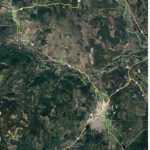Home »

Elk climbs on list of B.C.’s most endangered rivers
The Elk River has been steadily climbing on the BC Outdoor Recreation Council’s list of the province’s most endangered rivers.
The river has come under another microscope lately concerning rising selenium levels in its waters due to open pit coal mining, pushing it to third on the most endangered rivers list behind the Peace River and perennial list resident the lower Fraser River.
 “While the province recently announced a moratorium on new coal mines until selenium pollution is controlled, there must be a much more expedited effort to reduce toxic run-off from existing mines,” stated Mark Angelo, Rivers Chair for the Outdoor Recreation Council (ORC) of British Columbia.
“While the province recently announced a moratorium on new coal mines until selenium pollution is controlled, there must be a much more expedited effort to reduce toxic run-off from existing mines,” stated Mark Angelo, Rivers Chair for the Outdoor Recreation Council (ORC) of British Columbia.
The Peace River near Fort St. John, which is threatened by a third major dam that would flood more than 80 km of the last largely natural stretch of this river, is B.C.’s most endangered river in 2013. The proposed dam, known as Site C, is currently in the environmental assessment stage and approval could be forthcoming in the next year or so.
“If the dam goes ahead, it would have numerous environmental impacts, including the loss of key wintering wildlife habitat. Recreational values would also be severely diminished, many sacred cultural sites would be lost and the only class 1 agricultural land north of Quesnel would be flooded,” said Angelo.
Local opposition to the dam is widespread and passionate amongst both aboriginal and non-aboriginal groups and all affected First Nations are unanimously against the dam. The dam also carries an $8 billion price tag for a Crown corporation that already has a huge debt that’s close to being unmanageable, notes an ORC press release.
“Perhaps most significantly, the most recent BC Hydro electricity forecast shows no existing domestic need for the Site C dam and states that B.C. now has a surplus of power for domestic use expected to last for at least several years, if not longer,” the release states.

“Given the dam’s adverse impacts, the extensive local opposition and the current surplus of power recently documented by BC Hydro, the case for the dam has largely vanished,” added Angelo.
In second spot on this year’s list is the lower Fraser River with a particular emphasis on the ‘Heart of the Fraser’ located between the towns of Hope and Mission, one of the most productive stretches of river in the world.
“Given its proximity to Greater Vancouver, this extraordinary part of the Fraser faces an assortment of development pressures and is in severe need of a collaborative plan if its many values are to be protected,” said Angelo.
Of the waterways highlighted this year as ‘rivers to watch’ is the Coquitlam. This year marks the first time in many years that the Coquitlam has fallen off the main endangered rivers list. This is due to progress on several fronts, including the establishment of watershed round table and the implementation of a monitoring program that showed some improvement in controlling silt run-off from nearby gravel mines. However, an expanded monitoring program, under varying conditions, is required if concerns about excessive siltation are to be fully alleviated.
Also on the ‘rivers to watch’ list is the Tamihi Creek, a small Fraser Valley waterway that has become a poster child of sorts for the need to better protect streams with exceptional recreational values from independent power projects.
“There must be better planning mechanisms by which selected streams with exceptional natural or recreational values can be protected from private power development,” said Angelo.
As one scans the rivers that are profiled this year, it’s important to note that this year’s list is not meant to be all-inclusive and there are clearly other issues, such as ‘northern gateway,’ or the Kettle River, that ORC will continue to follow. But this year’s abbreviated list focuses on those issues deemed by members to be most imminent at this point in time, the ORC explains.
“The annual endangered rivers release, now in its 21st year, helps to create a greater awareness of the many threats that confront our waterways,” Angelo added. “And while we should be strengthening mechanisms to protect rivers, the ORC is dismayed by the recent weakening of habitat provisions in federal river-related legislation, such as the Federal Fisheries Act and the Navigable Water Protection Act.”
Each year, the ORC solicits and reviews nominations for B.C.’s Most Endangered Rivers from its member groups representing close to 100,000 members across B.C.
B.C.’s Most Endangered Rivers of 2013 (reasons why)
1. Peace River (hydro-electric dam proposal)
2. Lower Fraser (urbanization, industrial development, habitat loss)
3. Elk River (development, increasing selenium levels, wildlife migration issues).
e-KNOW







